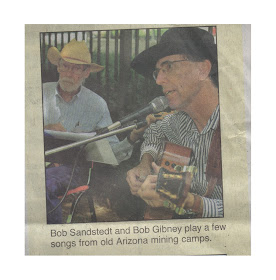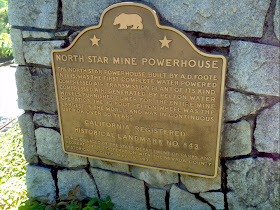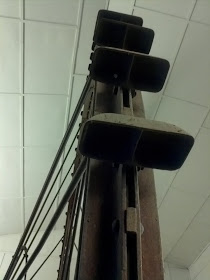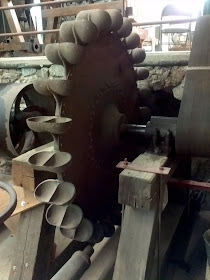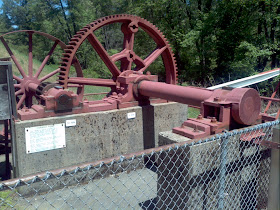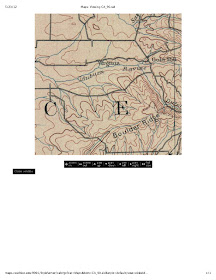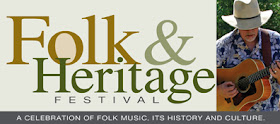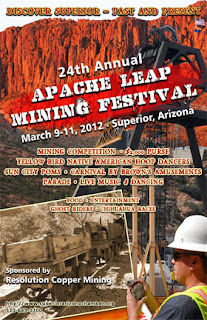 Thomas Edwin Farish's 8-volume History of Arizona was published between 1915 and 1918. Volume 6 describes the early days of the Salt River Valley and the formation and development of the Phoenix townsite. "When the commissioners appointed by the Salt River Valley Association received their instructions, they employed in the month of November, Captain Wm. A. Hancock to survey and plan the townsite upon the half section selected for that purpose, and by the 23rd of December, 1870, a sufficient number of lots had been surveyed to enable the Town Commissioners to hold a sale and so procure funds enough to prosecute the work of surveying. This work was necessarily slow, and frequently lagged for the want of funds, as money was very scarce, but by Autumn of 1871, the last lot had been surveyed and the Hancock map furnished, showing a town site one mile in length by half a mile in width, divided into ninety-eight blocks. These city founders laid out the original townsite of Phoenix so as to provide for a large and populous city in the future. Washington, the main street running east and west, was one hundred feet wide, as was also Jefferson, the first parallel street to the south, and Center, the principal cross street, while all other streets were made with a width of 80 feet. With few exceptions blocks were laid out three hundred feet long, 12 lots, 50x137½ feet each, to the block, with a 25 foot alley running through most of the squares.
The first lot sold was that on the southwest corner of Washington and Montezuma (now First) streets. It was bought by Judge William J. Berry of Prescott, for $104, while the adjoining lot to the south brought $40. The opposite corner, where Berryhill's store is now located, was sold to Captain Hancock for $70. It was resold to Ellis & Company a few years later for $8,000. The two lots first mentioned, Nos. 1 and 2 in Block 22, which at one time also belonged to George D. Kendall, an early contractor and carpenter, are to-day covered by a portion of what is called the Irvine Block, built in 1879, by Edward Irvine, an early resident of this city, but lately deceased, while upon the Hancock lot, No. 2 in Block 21, on the opposite side of Washington street, was erected in 1889 the Anderson Building, which is now occupied by the Berryhill Stationery Store and the Baswitz Cigar Company."
Thanks to Brad Hall for posting a copy of the Phoenix Townsite map. I posted the location and description of some of the first buildings constructed in Phoenix.
According to Farish, "At this time [1870's] all the buildings were of adobe. Lumber was exceedingly scarce and expensive, the little reaching the valley coming from Prescott."
Thomas Edwin Farish's 8-volume History of Arizona was published between 1915 and 1918. Volume 6 describes the early days of the Salt River Valley and the formation and development of the Phoenix townsite. "When the commissioners appointed by the Salt River Valley Association received their instructions, they employed in the month of November, Captain Wm. A. Hancock to survey and plan the townsite upon the half section selected for that purpose, and by the 23rd of December, 1870, a sufficient number of lots had been surveyed to enable the Town Commissioners to hold a sale and so procure funds enough to prosecute the work of surveying. This work was necessarily slow, and frequently lagged for the want of funds, as money was very scarce, but by Autumn of 1871, the last lot had been surveyed and the Hancock map furnished, showing a town site one mile in length by half a mile in width, divided into ninety-eight blocks. These city founders laid out the original townsite of Phoenix so as to provide for a large and populous city in the future. Washington, the main street running east and west, was one hundred feet wide, as was also Jefferson, the first parallel street to the south, and Center, the principal cross street, while all other streets were made with a width of 80 feet. With few exceptions blocks were laid out three hundred feet long, 12 lots, 50x137½ feet each, to the block, with a 25 foot alley running through most of the squares.
The first lot sold was that on the southwest corner of Washington and Montezuma (now First) streets. It was bought by Judge William J. Berry of Prescott, for $104, while the adjoining lot to the south brought $40. The opposite corner, where Berryhill's store is now located, was sold to Captain Hancock for $70. It was resold to Ellis & Company a few years later for $8,000. The two lots first mentioned, Nos. 1 and 2 in Block 22, which at one time also belonged to George D. Kendall, an early contractor and carpenter, are to-day covered by a portion of what is called the Irvine Block, built in 1879, by Edward Irvine, an early resident of this city, but lately deceased, while upon the Hancock lot, No. 2 in Block 21, on the opposite side of Washington street, was erected in 1889 the Anderson Building, which is now occupied by the Berryhill Stationery Store and the Baswitz Cigar Company."
Thanks to Brad Hall for posting a copy of the Phoenix Townsite map. I posted the location and description of some of the first buildings constructed in Phoenix.
According to Farish, "At this time [1870's] all the buildings were of adobe. Lumber was exceedingly scarce and expensive, the little reaching the valley coming from Prescott."
Tuesday, December 11, 2012
Original Phoenix Townsite Map
 Thomas Edwin Farish's 8-volume History of Arizona was published between 1915 and 1918. Volume 6 describes the early days of the Salt River Valley and the formation and development of the Phoenix townsite. "When the commissioners appointed by the Salt River Valley Association received their instructions, they employed in the month of November, Captain Wm. A. Hancock to survey and plan the townsite upon the half section selected for that purpose, and by the 23rd of December, 1870, a sufficient number of lots had been surveyed to enable the Town Commissioners to hold a sale and so procure funds enough to prosecute the work of surveying. This work was necessarily slow, and frequently lagged for the want of funds, as money was very scarce, but by Autumn of 1871, the last lot had been surveyed and the Hancock map furnished, showing a town site one mile in length by half a mile in width, divided into ninety-eight blocks. These city founders laid out the original townsite of Phoenix so as to provide for a large and populous city in the future. Washington, the main street running east and west, was one hundred feet wide, as was also Jefferson, the first parallel street to the south, and Center, the principal cross street, while all other streets were made with a width of 80 feet. With few exceptions blocks were laid out three hundred feet long, 12 lots, 50x137½ feet each, to the block, with a 25 foot alley running through most of the squares.
The first lot sold was that on the southwest corner of Washington and Montezuma (now First) streets. It was bought by Judge William J. Berry of Prescott, for $104, while the adjoining lot to the south brought $40. The opposite corner, where Berryhill's store is now located, was sold to Captain Hancock for $70. It was resold to Ellis & Company a few years later for $8,000. The two lots first mentioned, Nos. 1 and 2 in Block 22, which at one time also belonged to George D. Kendall, an early contractor and carpenter, are to-day covered by a portion of what is called the Irvine Block, built in 1879, by Edward Irvine, an early resident of this city, but lately deceased, while upon the Hancock lot, No. 2 in Block 21, on the opposite side of Washington street, was erected in 1889 the Anderson Building, which is now occupied by the Berryhill Stationery Store and the Baswitz Cigar Company."
Thanks to Brad Hall for posting a copy of the Phoenix Townsite map. I posted the location and description of some of the first buildings constructed in Phoenix.
According to Farish, "At this time [1870's] all the buildings were of adobe. Lumber was exceedingly scarce and expensive, the little reaching the valley coming from Prescott."
Thomas Edwin Farish's 8-volume History of Arizona was published between 1915 and 1918. Volume 6 describes the early days of the Salt River Valley and the formation and development of the Phoenix townsite. "When the commissioners appointed by the Salt River Valley Association received their instructions, they employed in the month of November, Captain Wm. A. Hancock to survey and plan the townsite upon the half section selected for that purpose, and by the 23rd of December, 1870, a sufficient number of lots had been surveyed to enable the Town Commissioners to hold a sale and so procure funds enough to prosecute the work of surveying. This work was necessarily slow, and frequently lagged for the want of funds, as money was very scarce, but by Autumn of 1871, the last lot had been surveyed and the Hancock map furnished, showing a town site one mile in length by half a mile in width, divided into ninety-eight blocks. These city founders laid out the original townsite of Phoenix so as to provide for a large and populous city in the future. Washington, the main street running east and west, was one hundred feet wide, as was also Jefferson, the first parallel street to the south, and Center, the principal cross street, while all other streets were made with a width of 80 feet. With few exceptions blocks were laid out three hundred feet long, 12 lots, 50x137½ feet each, to the block, with a 25 foot alley running through most of the squares.
The first lot sold was that on the southwest corner of Washington and Montezuma (now First) streets. It was bought by Judge William J. Berry of Prescott, for $104, while the adjoining lot to the south brought $40. The opposite corner, where Berryhill's store is now located, was sold to Captain Hancock for $70. It was resold to Ellis & Company a few years later for $8,000. The two lots first mentioned, Nos. 1 and 2 in Block 22, which at one time also belonged to George D. Kendall, an early contractor and carpenter, are to-day covered by a portion of what is called the Irvine Block, built in 1879, by Edward Irvine, an early resident of this city, but lately deceased, while upon the Hancock lot, No. 2 in Block 21, on the opposite side of Washington street, was erected in 1889 the Anderson Building, which is now occupied by the Berryhill Stationery Store and the Baswitz Cigar Company."
Thanks to Brad Hall for posting a copy of the Phoenix Townsite map. I posted the location and description of some of the first buildings constructed in Phoenix.
According to Farish, "At this time [1870's] all the buildings were of adobe. Lumber was exceedingly scarce and expensive, the little reaching the valley coming from Prescott."
Thursday, November 29, 2012
Scheduled Appearance Update and New Article in True West Magazine
I am scheduled to perform my original songs and stories at the Rustic Cafe on this Saturday night:
Dec 8 - 6:00 - 6:30 Rustic Cafe - 20811 N Cave Creek Road, Phoenix (2 blocks north of 101)
I will be performing several new songs. My newest song (The Mexican Outlaws) is in memory of Nicholas Ivie, the US Border Patrol Officer who died on Oct 2 near the town of Naco, Arizona. Another song (The Ballad of the Rocking AD) is inspired by the work of Allen Dutton, the muti-talented artist who has written about and photographed many of Arizona's historic locations. Mr. Dutton's good humor and intellectual curiosity has inspired the creative spirit of all his work: photographs, painting, writing, sculpture, and teaching.
I am pleased to announce that True West Magazine will be publishing my article about the life of William Porter Jones, a young man who left his family in rural Missouri to search for gold in the western mining camps from 1858 to 1864. His collection of letters were preserved by his family and donated to the Sharlot Hall Archives. The letters tell the tale of a prospector who maintained his good humor and optimism, despite the danger and financial risks that he faced in his chosen occupation. William Jones' journey took him from Pike's Peak Colorado, to Grass Valley and Virginia California, to Aurora Nevada, and finally to the mining camps along the Hassayampa River, Lynx Creek, and Big Bug Creek, Arizona. His last letter home was post marked "Has-sa-amps Walker's Diggins" Jan 24, 1864. Jones was killed in June 1864 at the beginning of the violent conflict between the settlers and the Apache Indians. My song "A Miner's Letter Home" was inspired by the life of William Porter Jones.
The True West Magazine will be on sale on Jan 1. The title of the article is "War To The Death". I hope that you enjoy the article.
Dec 8 - 6:00 - 6:30 Rustic Cafe - 20811 N Cave Creek Road, Phoenix (2 blocks north of 101)
I will be performing several new songs. My newest song (The Mexican Outlaws) is in memory of Nicholas Ivie, the US Border Patrol Officer who died on Oct 2 near the town of Naco, Arizona. Another song (The Ballad of the Rocking AD) is inspired by the work of Allen Dutton, the muti-talented artist who has written about and photographed many of Arizona's historic locations. Mr. Dutton's good humor and intellectual curiosity has inspired the creative spirit of all his work: photographs, painting, writing, sculpture, and teaching.
I am pleased to announce that True West Magazine will be publishing my article about the life of William Porter Jones, a young man who left his family in rural Missouri to search for gold in the western mining camps from 1858 to 1864. His collection of letters were preserved by his family and donated to the Sharlot Hall Archives. The letters tell the tale of a prospector who maintained his good humor and optimism, despite the danger and financial risks that he faced in his chosen occupation. William Jones' journey took him from Pike's Peak Colorado, to Grass Valley and Virginia California, to Aurora Nevada, and finally to the mining camps along the Hassayampa River, Lynx Creek, and Big Bug Creek, Arizona. His last letter home was post marked "Has-sa-amps Walker's Diggins" Jan 24, 1864. Jones was killed in June 1864 at the beginning of the violent conflict between the settlers and the Apache Indians. My song "A Miner's Letter Home" was inspired by the life of William Porter Jones.
The True West Magazine will be on sale on Jan 1. The title of the article is "War To The Death". I hope that you enjoy the article.
Sunday, September 9, 2012
Military Map - mid 1860's - Prescott - Ft Whipple and Vicinity

Historic maps provide a window into the exploration and development of an area. This undated map (probably 1864-65) is one of the first maps prepared by the U.S. Army to record the rivers and settlements of the Bradshaw Mountain region. Previous historic maps, going back to the Spanish colonists do not show this level of detailed topographic features and trails.
Joseph Walker, with the aid of Jack Swilling, led his small party of prospectors and adventurers into the Arizona Territory in 1863. They travelled through New Mexico, and entered Arizona from the southeast, followed the San Pedro River north to the Gila River, and then travelled west to the mouth of the Hassayampa River. They followed the Hassayampa River north, past present-day Wickenburg, and up the pine-covered slopes of the Bradshaw Mountains. They discover placer gold deposits along Lynx Creek, several mile southwest of Prescott.
Although this is a small portion of the original map, it demonstrates the importance of rivers in the selection of travel routes and settlement locations in the Arizona Territory.
The townsite of Prescott, Fort Whipple, and Bowers Ranch are located along Granite Creek.
The stamp mill is located along an unnamed creek. The network of trails and roads follow the path of the creeks. Fort Whipple was created by the U.S. Army to provide protection to the prospectors and pioneers who settled in Prescott and outlying areas.
This map is included in the Military Map Collection at the National Archives. Many thanks to Jack Carlson for taking this digital photo of the map and providing it to me to support my research. Jack Carlson is the author (along with Elizabeth Stewart) of several books about the hiking trails and history of the Superstition Mountains. Check out his website for more information: www.clearcreekpublishing.com
Tuesday, June 19, 2012
Sharlot Hall Folk Arts Festival - Prescott Courier Photo
Thanks to Bob Sanstedt, who added his fine banjo playing to back up my historic and mining songs. He sang a few of his favorite songs and played some banjo instrumentals. Our photo appeared in the Prescott Courier.
Thanks to Jody Drake, Curator of Education at Sharlot Hall Museum, for setting up a p.a. system for my use on Saturday morning. The Sharlot Hall Museum provides a unique venue for the Arizona folk music community to entertain and educate the public.
Monday, June 11, 2012
North Star Mine Powerhouse - Grass Valley, Californa
I visited the North Star Mine Powerhouse in Grass Valley, California in May. Gage McKinney, a local mine historian, recommended that I include this site during my tour of the area. It is a small museum that contains many working examples of historic mining technology. The 30-foot Pelton Water Wheel is the highlight of the exhibit. I included three photos, since the wheel was too large to fit in one photo. The second photo shows the tour guide to give some perspective to the scale of the wheel.
The tour guide explained that the Pelton Water Wheel was invented in the 1870's. Each scoop is divided in two equal sections (see last photo for a good view). According to the tour guide this design transfers more energy to the water wheel than traditional waterwheels. He was proud to report that he saw a Pelton Water Wheel among the massive hydro-electric generators at Hoover Dam.
The museum display includes one of the only working Cornish Pumps in the world. Cornish Pumps were designed to pump large volumes of water from mine shafts.
This small museum is rich in mining history, but does not appear to attract a large amount of visitors. It is worth your time to check it out if you are visiting the Grass Valley area.
North Star Mine Powerhouse Historic Landmark
30 foot Pelton Waterwheel
Smaller Pelton Waterwheel showing the divided scoops
Cornish Pump
Tuesday, June 5, 2012
Sharlot Hall Folk Arts Festival - History Meets Music
I had an enjoyable day on Saturday at the Sharlot Hall Folk Arts Festival in Prescott. I participated in the Gold Panning area by telling historical stories and singing songs about the early days of Arizona's settlement. We were fortunate that Jack Light, an expert mining geologist, led the gold panning activities. We can't say for sure, but it looked like a lot of children went home with packets of gold dust.
I sang one of my songs, "The Hassayamper Song" that pays tribute to the men (Pauline Weaver, Joseph Walker, and Jack Swilling) who led the first two parties of pioneers and prospectors up the Hassayampa River in 1863 in search of gold. Pauline Weaver led a small group of men, including Henry Wickenburg and Abraham Peeples, north from Yuma along the Colorado River, east along Bill Williams River and Date Creek. It was there that they discovered the rich placer gold deposits at Rich Hill, and along Antelope and Weaver Creeks.
It was especially appropriate that I sang "The Hassayamper Song" since Pauline Weaver's gravesite is located at the north entrance to the Sharlot Hall grounds. The plaque on his granite boulder headstone reads as follows:
Pioneer - Prospector - Scout - Guide
Trapper - Fur Trader - Empire Builder - Patriot
Pauline Weaver, truly a great man
Born in Tennessee in 1800
Died at Camp Verde June 21, 1867
He was born, lived, and died on the frontier of this country, always in the ever advancing westward move of civilization and was the first settler on the site of Prescott. He was descended from the best blood of the white man and the native american, and his greatest achievement was as peacemaker between the races, understanding as few ever did the true hearts of the two peoples.
Tuesday, May 29, 2012
Virginia, California - Historic Mining Camp
William Porter Jones wrote three letters while living in Virginia, California 1860-1861. These letters provide a rare view of the life of a placer miner: "I am mining and I now regard my prospects as better than they ever have been since I came here. I have always had money to get what I needed and now I have a good claim and I owe no man in California a cent but have money owing to me. My claim has paid better than I expected. I have only been washing for three weeks and have done well - the expense of opening my claim has been great therefore I have saved but little but now I am ready to save what I take out of it so you see I am in fine spirits...I am still 'hoisting grit' some days making several dimes and others but precious few." These excerpts express the optimism of a young man seeking his fortune while acknowledging the harsh realities of a placer miner.
Virginia was a placer mining camp located along the Aurora Ravine, about 20 miles south of Grass Valley. While the town of Virginia did not survive, the site is located about half-way between Lincoln and Auburn. It is interesting to note that most modern roads follow the alignment of the roads shown on the historic map dated 1892.
The William Porter Jones letters are housed in the Sharlot Hall Archives:
http://sharlot.org/archives/manuscripts/personal/Jones_William.pdf
Virginia was a placer mining camp located along the Aurora Ravine, about 20 miles south of Grass Valley. While the town of Virginia did not survive, the site is located about half-way between Lincoln and Auburn. It is interesting to note that most modern roads follow the alignment of the roads shown on the historic map dated 1892.
The William Porter Jones letters are housed in the Sharlot Hall Archives:
http://sharlot.org/archives/manuscripts/personal/Jones_William.pdf
Testimonial Letter
I received this letter from Joyce Sackett, thanking me for my historic research and song-writing work. Joyce is the great-niece of William Porter Jones, the subject of my song, "A Miner's Letter Home":
"The first I heard of Robert Gibney was that he had seen the donation of letters...at the Sharlot Hall Museum. My message said that he had written a song about our Great-Uncle, William Porter Jones, who was massacred by Indians in 1864 in Prescott. In Bob's exploring of mining in the territory, he was drawn to the story described in the letters. Bob came to meet my husband and me in Sun Lakes. He had many photos of where the events occurred and sang as Uncle Will had expressed himself as he wrote home to his family (in Missouri).
A friend and I went to the 2012 Glendale Arizona Folk & Heritage Festival as Bob sang and told stories of the miners. We were pleased to see that descendants of other miners came to see him. Bob has a passion to explore Arizona history and to share it in song and story. Also his passion includes remembering the miners and their contribution to Arizona history. My sister and I are so pleased to share our heritage with others who want to understand the past." - May 2012
"The first I heard of Robert Gibney was that he had seen the donation of letters...at the Sharlot Hall Museum. My message said that he had written a song about our Great-Uncle, William Porter Jones, who was massacred by Indians in 1864 in Prescott. In Bob's exploring of mining in the territory, he was drawn to the story described in the letters. Bob came to meet my husband and me in Sun Lakes. He had many photos of where the events occurred and sang as Uncle Will had expressed himself as he wrote home to his family (in Missouri).
A friend and I went to the 2012 Glendale Arizona Folk & Heritage Festival as Bob sang and told stories of the miners. We were pleased to see that descendants of other miners came to see him. Bob has a passion to explore Arizona history and to share it in song and story. Also his passion includes remembering the miners and their contribution to Arizona history. My sister and I are so pleased to share our heritage with others who want to understand the past." - May 2012
Monday, April 23, 2012
John Townsend Ranch - Then And Now
My research about John Townsend continues. My prior blog posts include a short account of Townsend's life in Arizona, a description of his last day, and a historic survey map showing the location of the Townsend Ranch. 19th century newspaper articles and personal letters are very unclear about geographic locations. It was common to refer to well-known ranches (i.e. Woolsey, Boggs, Townsend) as though everyone knew their location.
Based on the available evidence (the historic photo in the Sharlot Hall Archives, historic descriptions of the area, and the historic survey map in my prior blog post), I set out to explore the Townsend ranch site and take a modern photo of the ranch. The basalt cliff in the historic photo was an important visual clue to aid in my search.
Thanks to Cliff Hersted, the Archaeologist at Arcosanti, I was able to take the photo shown below which matches the location of the historic photo. The experience of visiting the Townsend Ranch site brings to life the many stories of Townsend's life:
- the rich farm land along the banks of the Agua Fria River was a natural location for Townsend to fulfill his contract to provide grain and hay to the troops Fort Verde
- Townsend accepted the inherent risks of settling away from the safety of Fort Whipple
- The Townsend Ranch encroached on the established Indian trails, water holes, and hunting lands
- Dripping Springs, the site of Townsend's death, is located four miles to the southwest.
Wednesday, March 28, 2012
Glendale Folk & Heritage Festival - March 24-25 - UPDATE
It is a memorable experience when a song really connects with the audience. Two families who attended my performance at the Glendale Folk & Heritage Festival had a special connection to my songs. Joyce Sackett is the great-niece of William Porter Jones, the subject of "A Miner's Letter Home". "Uncle Will" left his parent's home in Missouri in 1858 at the age of 21 to search for gold out west. William Jones spent the next six years prospecting and corresponding with his family and friends back home. My song traces his experiences in the gold fields of Colorado, California, Nevada, and Arizona. He was among the first group of prospectors to stake a claim along Lynx Creek in the winter of 1863. His adventurous life was cut short in June, 1864 when he was ambushed by Apache braves while travelling along Big Bug Creek.
Three sisters of Onofre "Taffy" Tafoya attended to hear my newest song, "Los Mineros", which is based on Taffy's successful 40-year career working in the San Manuel Mine. Mr. Tafoya wrote two books about his experiences in the mine: "Los Mineros" and "Mother Magma". Mr. Tafoya is proud of all that he accomplished during his working years. His books recognize the contributions made by all of his co-workers toward the safe and productive record in the San Manuel Mine.
Thanks to everyone for making this such a memorable experience for me.
Thursday, March 22, 2012
Glendale Folk & Heritage Festival - March 24-25
The City of Glendale is holding its annual Folk & Heritage Festival this weekend (March 24-25) at Sahuaro Ranch Park. It is a free event full of original and traditional folk songs and workshops.
I am scheduled to lead a workshop in historic and mining songs on Saturday from 4:00 to 5:00 at "Gilligan's Island". I will perform my original songs about Arizona history and mining on Sunday from 1:30 to 2:00 on the Library Patio.
9802 N. 59th Ave.
Glendale Arizona 85302
Phone: (623) 930-4200
Here is link to the Sahuaro Ranch website:
http://www.glendaleaz.com/SRPHA/index.cfm
Here is a link to the schedule:
http://www.glendaleaz.com/ParksandRecreation/documents/Folk-HeritageSchedule.pdf
Saturday, March 17, 2012
Photos from the Apache Leap Mining Festival, Superior, Arizona
Here are some photos from my performance at the Apache Leap Mining Festival in Superior on March 10. The festival included mining skills demonstrations and entertainment from local performers celebrating Arizona's rich heritage. I was pleased to perform my new song, "Los Mineros", in honor of my special guest, Taffy Tafoya and his family. The song is inspired by two books written by Mr. Tafoya, "Mother Magma" and "Los Mineros", which describe his successful 38-year career in the San Manuel Mine. The lyrics of "Los Mineros" pay tribute to the important role of Mexican miners throughout Arizona history: "My name is Onofre Tafoya. I worked forty years underground. Like many who have come before me, Los Mineros will always be found."
Taffy and his wife Allison were joined by family and friends to hear the debut of "Los Mineros".
Thursday, March 8, 2012
Apache Leap Mining Festival - March 10-11 - Superior, Arizona
The Town of Superior is hosting the 24th Annual Apache Leap Mining Festival this weekend - March 10 and 11. Miners will demonstrate traditional skills (drilling, mucking, spiking, and sawing) and compete for cash prizes. There will be a variety of entertainment throughout the weekend. I will perform my mining and history songs on Saturday from 5-6. I can't think of a better venue for celebrating Arizona's rich mining heritage.
Monday, March 5, 2012
Site of John Townsend Ranch - 1870-1880
John Townsend is the subject of one of my songs, and continues to be the focus of my historical research. Please refer to my prior blog posts for background information about John Townsend. I have learned some important information over the past two years about one of Arizona's more interesting Pioneers. I have collected and read material housed in the archives of Arizona libraries and museums, online historic newspaper articles, secondary sources (journals, local and regional histories), and historic maps. Among other things, I have determined the location of the Townsend Ranch. Historic newspaper articles and letters refer to ranches, assuming that their location was common knowledge (i.e. Woolsey Ranch, Boggs Ranch, Townsend Ranch). As stated in the lyrics of my song, the Townsend Ranch was 40 miles from Fort Whipple, along the Agua Fria River. This was a dangerous place to live between 1865-1880. Pioneers in this area were isolated from the protection of Fort Whipple, while occupying a traditional travel route and rest area used by the Apache Tribe.
Here is an excerpt of a historic land survey map issued in 1874:
It is fortunate that the surveyor listed the owner/tenant for each ranch included in the survey. The Boggs brothers, Theodore and John, will be the subject of future blog posts.
Sunday, February 26, 2012
1891 School House - Arizona Centennial Event
I had the honor to perform some of my Arizona history and mining songs on Feb 14th, at an Arizona Centennial Event. The 1891 School House Site, near Cordes Junction, was dedicated by a team from the Bureau of Land Management, the Friends of the Aqua Fria National Monument, and a group of local residents. The historic school site was located on a historic survey map, and developed by a team of volunteers and BLM workers. I sang my new song "The Spirits of the Agua Fria" in honor of the occasion: "Listen to the old souls who settled this land, The spirits of Agua Fria, as they make their last stand."

